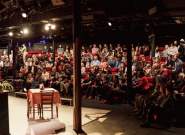The team at The Matthew delve into the story behind this piece of maritime Bristol history for us...
The Matthew you see in Bristol today is a modern reconstruction of the original Matthew that John Cabot sailed to Newfoundland in 1497. Built between 1994 and 1996 on Redcliffe Quay, in May 1997 the modern Matthew set off on its own transatlantic voyage to celebrate the 500th anniversary of Cabot’s famous voyage of exploration to Newfoundland.
The ship today is a much-loved part of Bristol’s maritime heritage with a busy schedule of public and private hire boat trips, school trips, film and festival work, and corporate and celebratory events.
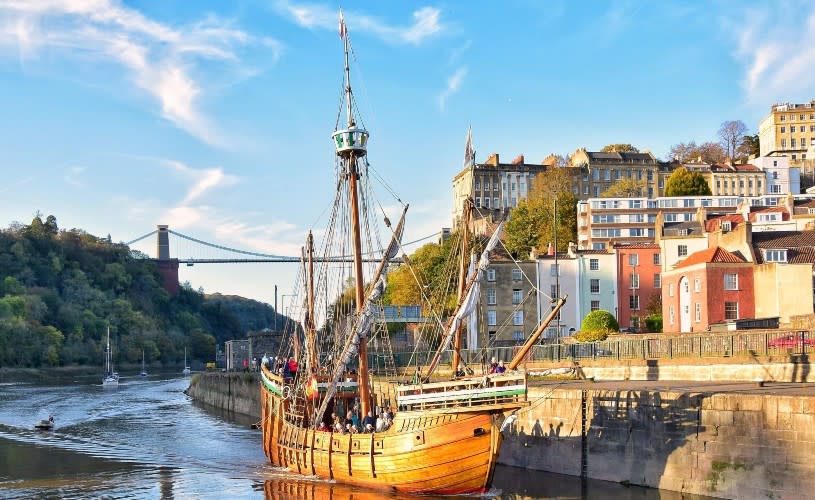
Image - The Matthew in the Cumberland Basin, credit Nick Greville
The original Matthew
The original Matthew was an ordinary commercial ship called a caravel and was used to carry goods between Bristol, Ireland and Biscay. Described as a ‘little ship’ in contemporary accounts, it was larger than the average 10-20-ton boats that were used for navigation around the Bristol Channel but smaller than the 300-400-ton merchantmen that the port’s traders employed for the long voyages to Lisbon and Seville.
In the late 1400s, Bristol merchants were convinced that at some time in the past, Bristol mariners had discovered a new land to the West – the isle of Brasil. Several exploratory expeditions were sent out from the city to the Atlantic in search of this land and its highly valuable brazilwood.

Image - Cabot leaving Bristol in 1497. Painting by Thomson. From J.A. Cochrane – The Story of Newfoundland. (Montreal_ Ginn and Co., 1938)
The earliest of these expeditions took place sometime before 1476 and at least two more were launched in 1480 and 1481, before the ground-breaking transatlantic voyage made by John Cabot in 1497.
Of all of the many expeditions that sailed from the port of Bristol, John Cabot’s voyage aboard The Matthew was the most successful and is still the most well-known.
Building the modern Matthew
The Matthew of Bristol was designed by Colin Mudie, a specialist ship designer and naval architect who led a team of twelve local shipwrights on the build. Among his many other achievements during his career, Colin also managed the restoration of the Tudor warship Mary Rose.
In Cabot’s day, shipwrights didn’t produce plans to build their ships as they do today, so the reconstruction was based on archaeological evidence of ships and shipbuilding at the time, alongside contemporary illustrations and documented descriptions of The Matthew. However, some features had to be modernised to comply with safety regulations, and also to reflect its new life as a public charter vessel and unique heritage attraction.
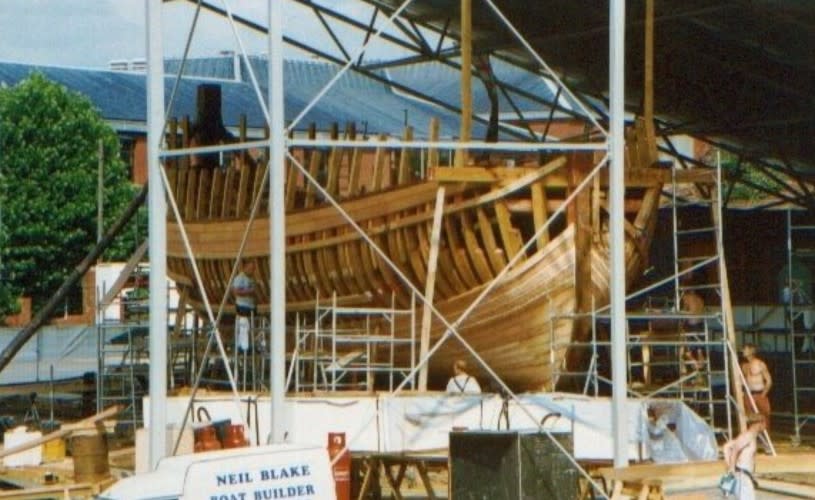
Image - Building The Matthew, credit Shawn Smith
The original Matthew would most probably have been made of oak, larch and pine – all strong and durable woods suitable for long voyages. The modern Matthew is built from oak and Douglas fir.
The modern ship is able to self-right without the aid of the crew, some of its fittings are made from different materials than would have been available in medieval times, it has been fitted with hatches and, of course, it has a diesel engine and ship’s radio!
The Matthew Project was given a royal endorsement by its patron HRH Prince Philip, Duke of Edinburgh, who laid the keel and also donated the ship’s main mast, fashioned from a 75ft Douglas fir. Following an old medieval tradition, when the mast was stepped (raised) a genuine medieval gold coin was placed beneath it.

Image - HRH Prince Philip laying the keel
The launch
The Matthew of Bristol was launched in September 1996 by Lady Wills on behalf of Prince Philip. In keeping with its Bristolian heritage, Lady Wills smashed a bottle of Harvey’s Bristol Cream Sherry on the bow rather than the traditional champagne!
After completing sea trials to London, The Matthew set sail for Newfoundland on 2 May 1997. Skippered by David Alan Williams, she successfully made landfall in Bonavista on 24 June, where she was welcomed into port by Queen Elizabeth II.

Image - The Matthew from build to today
The crew
The Matthew’s skipper today is well-known Bristol sailor Rick Wakeham. The ship has a dedicated crew of volunteers who run the Trust, help to maintain the ship and also work as guides and crew on our trips.
The crew know a vast amount about The Matthew, John Cabot and Bristol’s maritime history. They’re so good at what they do that The Matthew of Bristol Trust was honoured with the Queen’s Award for Voluntary Service in 2019. Created in 2002 to celebrate the Queen’s Golden Jubilee, this is the highest award a voluntary group can receive in the UK and aims to recognise outstanding work by volunteer groups to benefit their local communities.
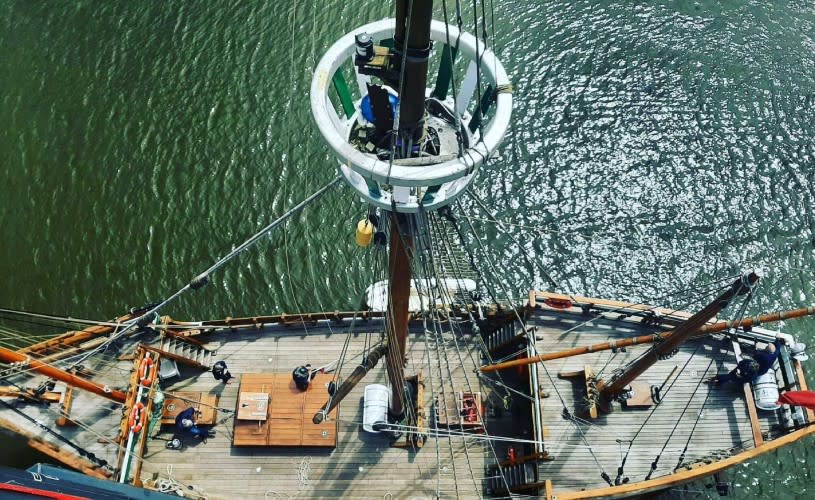
Image - Above the crow's nest, credit The Matthew of Bristol
2022: The Matthew’s 25th anniversary year
2022 is a special year for The Matthew, marking the 525th anniversary of the departure of the original Matthew on 2 May 1497, and the 25th anniversary of the departure of the modern Matthew in 1997, exactly 500 years later.
Since 1997, The Matthew has enjoyed many voyages and trips, featured in a number of films and television programmes and has been welcomed at maritime festivals across Europe.
The Matthew of Bristol is now located in the heart of central Bristol in the historic Floating Harbour where it has a permanent mooring on Princes Wharf. It is the ideal place to start your exploration of the Harbourside and is one of the first maritime attractions you will see as you walk from the city centre along the quayside. When not out on a trip, the ship is open to the general public – it’s free to come aboard, explore the ship and have a chat with our volunteers.
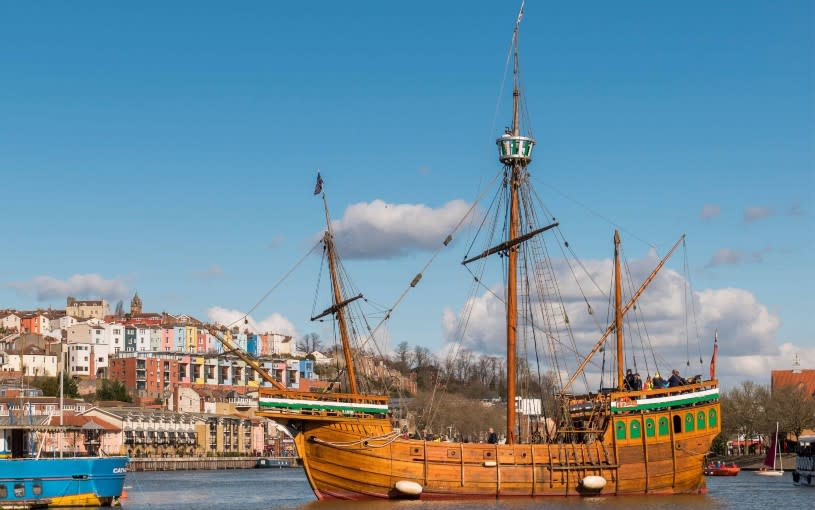
Image - The Matthew on Bristol harbour, credit Carolyn Eaton
As we look to the future, The Matthew of Bristol Trust intends to continue maintaining, improving and updating the ship and its systems, ensuring that The Matthew of Bristol can continue to delight visitors and passengers for at least another 25 years!
Read more about the history of The Matthew and John Cabot and buy your tickets for trips on The Matthew.
You might also like:





